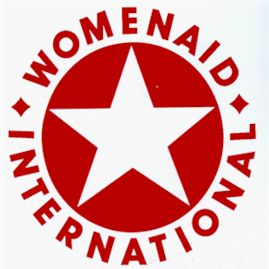Europe and North America
The commercial sexual exploitation of children in the industrialised countries of Europe and North America is a recognised phenomenon. Nevertheless, despite otherwise good statistics and research facilities on social issues, little data is available on the subject.
Commercial sexual exploitation of children in industrialised countries primarily occurs as child prostitution and pornography. In recent years, with the collapse of the Soviet Union, child trafficking from Eastern to Western Europe and the United States is on the rise. The factors driving child prostitution in these countries are poverty, growing economic disparities, severe stress on families, drug abuse and, in more affluent societies, rampant consumerism. The majority of children involved in street prostitution in the US and Western Europe are runaways often fleeing family abuse.
In addition, West European and North American countries are the primary points of origin for sex tours to Asia and Latin America. A mid-1996 update to ECPAT's database on sex abusers, covering the 240 sex exploiters who have been arrested, convicted, imprisoned and/or deported or otherwise found guilty of child sex crimes in the past seven years in Asia, shows that most are Americans, followed by Germans, British and Australians.
Data studies
In 1995 research project showed that 10 per cent of prostitution in northern Italy involves girls between the ages of 10 and 15 years. Thirty per cent of prostitutes are between 16 and 18 years of age.
A UN report cited a Defense for Children International estimate in 1988 that about 1,000 children were working as prostitutes in the Netherlands. Among them were children of migrant workers and children trafficked from Central and South America, Africa and Asia, according to the Children's Society in a 1995 publication. There is widespread trafficking of women and children from Poland to Germany and Western Europe.
In the United Kingdom in recent years there has been a spate of reports on children being sexually exploited while in the care of social services, and a number of paedophile rings have been identified and broken up. Investigations into Europe-wide paedophile networks have also been carried out in conjunction with police in France, Switzerland and other parts of Europe. In Scandinavian countries, too, police have stepped up investigations into sex tourism originating from the area, as well as into the activity of Scandinavians posted overseas and into paedophile networks.
Child prostitution has recently risen in Eastern Europe, where political and economic upheavals, runaway inflation and increasing economic disparities have made communities and children especially vulnerable.
Child prostitution in Eastern Europe is primarily a street-based phenomenon, with some children working in bars and other entertainment venues as well as railway stations and other public areas. Increasing numbers of girls are lured from Eastern Europe - especially the Czech Republic, Poland, the Russian Federation and Ukraine - to countries in Western Europe, such as Belgium, Germany and the Netherlands, with the promise of respectable jobs. Instead they are snared into prostitution. Less than a quarter of them are aware of what they are getting into, according to La Strada, a programme in Central and Eastern Europe to address the issue of trafficking of women. The production of pornography by both Eastern and Western European producers has increased, with pornographic videos marketed throughout Europe.
In Estonia, estimates given during a 1995 ECPAT study project suggest there are about 4,000 prostitutes, of whom 20 to 30 per cent are minors. In Tallinn, some girls aged 10 and 11 have been found soliciting near the railway station.
Up to 10,000 children in Latvia and Lithuania are no longer in school but spend their time on the streets. Many sell themselves for small sums of money. A recent report on Eastern Europe indicated that children in Romania are especially vulnerable. Street children number around 2,000 according to Save the Children (1996). Many of them sell sexual services or are forced to exchange sex for a place to sleep. A large proportion of the boys who are trafficked into Western Europe for sexual exploitation are from Romania.
In the Russian Federation, organised crime is heavily involved in the commercial sexual exploitation of girls aged 13 to 17 (younger girls and boys have also been identified). Street gangs of children are said to sell sex as one of many activities, and younger siblings are sold by older ones. Many children also prostitute themselves on street corners and at railway stations.
In the United States it is estimated that between 100,000 and 300,000 children are sexually exploited through prostitution and pornography. A study by the US arm of Defense for Children International reports that the children are often runaways who have suffered incest, rape or abuse at home. They are driven into prostitution by poverty and/or to make money for drugs or consumer goods otherwise out of reach.
Similarly, in Canada a number of young boys and girls are exploited in this way. Paedophile rings are also reported to be involved, operating between Europe and North America, and are closely connected with the demand for child pornography.


